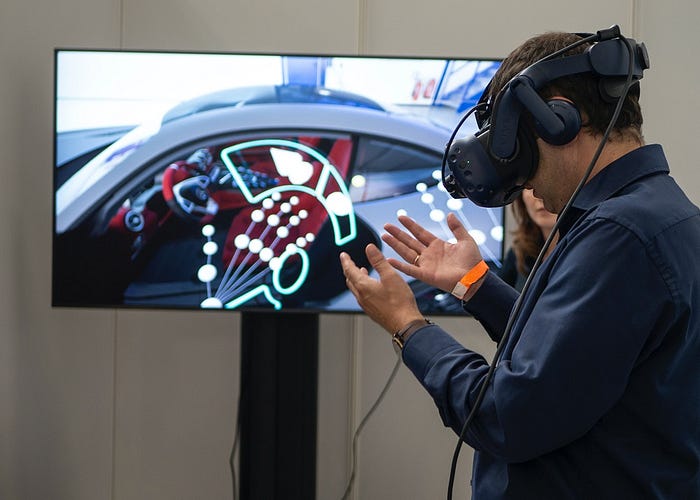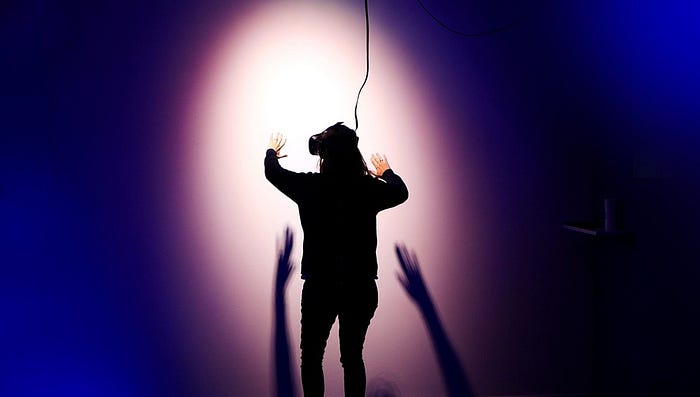The World of Virtual Reality: How Virtual Entertainment is Integrating Cutting-Edge Technology?
Technology is ubiquitous in our daily lives. With exciting development in the use of technology, media, and entertainment, firms are transitioning to merge virtual and physical worlds. By integrating technologies like artificial intelligence (AI), augmented reality (AR), and virtual reality (VR), brands can create immersive experiences for their viewers, thereby bridging the gap between the digital and the physical space.
Enterprises in the media and entertainment space are increasing their IT investments. With IoT, cloud, and data analytics still positioned as the key technologies leveraged across major operations, AI and blockchain are also providing promising opportunities. However, enterprises need to adopt advanced security solutions in order to safeguard their IT systems against cyber threats.
How Virtual Reality is Reinventing the Wheel?
Many industries are witnessing a shift in technology, along with culture and society. And this scenario remains true for the media and entertainment industry as well. However, the most obvious to consumers has been the shift from television to streaming services, including Netflix and Amazon Prime. These platforms offer the viewers greater flexibility allowing them to decouple themselves from an entertainment schedule while being dictated by broadcast times. OTT platforms are aligning themselves with the changing consumer patterns. The expansion of these services is now becoming a norm, facilitating more media consumption.

Read more: Emerging Trends in Media and Entertainment Industry in 2023
With other advancements in tech, there have been continuations of older formats, such as streaming services selling similar products to television. And this is one of the areas that are now transitioning into virtual reality. Developers and artists are beginning to get to grips with technology and how it could be used for innovation.
Metaverse is also offering a platform for brands to build virtual realities as one of their foundations. However, the issue with early VR platforms was that they could not represent a world that felt real. By overcoming these technical limitations, new platforms have managed to implement photorealistic graphics to create an immersive experience for the user in their new world. By integrating these technological leaps, entertainment providers are bringing to market an inhabited metaverse that employs cutting-edge technology to power its AI-driven avatars and present the idea of an immortal virtual being in the digital realm.
Read more: Artificial Intelligence and the Downsides of AI Data Collection
Types of Technologies in the Virtual Reality and Real World
With technologies like video streaming services, music streaming, online news, and other forms of entertainment becoming democratized and more accessible, brands are fostering relationships and conversations that can be maintained with the AI personality. By employing advanced AI, metaverse users can have fluid conversations with other users. These AI lifeforms are helping to extend the virtual world outside of the metaverse. There are many technologies that are being employed in both the virtual and real world of entertainment. Some of these technologies are as follows:

- Virtual Reality headsets: VR headsets allow users to gain an immersive experience in a virtual environment.
- Augmented reality: This technology overlays digital information in the real world.
- 3D printing: It enables the users to create three-dimensional objects from a digital file.
Every technology has a unique application and use. Today virtual reality (VR) headsets are being used for gaming, entertainment, or training simulations. Augmented reality can also be used for navigation, data visualization, or to add digital content to the real world.
Augmented reality (AR), along with virtual reality (VR), has passed the stage of just being tech fads. These technologies offer support as well as a rich gamut of experiences across multiple sectors. And with the application of VR in the entertainment industry, brands are endeavoring a chance in AR and VR entertainment.
Driven by the proliferation of digital streaming platforms and to cater to the rising demand for better content, the media and entertainment industry is leveraging cutting-edge technology and adopting solutions driven by the internet of things (IoT), cloud computing, artificial intelligence (AI), and data analytics to enhance the user experience. This enables them to monetize their content while remaining competitive in an omnichannel environment.
Another upcoming technology — blockchain — is offering numerous benefits. Some key applications in the media and entertainment industry include:
- Preventing piracy: Blockchain is enabling service providers to overcome one of the biggest problems faced by them, which is piracy. The use of blockchain helps in recording each transaction in the value chain that is then updated instantly, thus reducing the scope for piracy.

- Copyright protection: The time-stamping feature of blockchain allows digital artwork creators to quickly register proof of their art so that they can protect their creations from unauthorized use. While the feature does not help in tracking the ownership changes, it does help in confirming that the asset is creator owned.
- Blockchain-based smart contracts: Blockchain-based smart contracts are being used to enforce license terms and dispense payments. It helps in publishing and downloading certain digital content at a defined time and price. The payouts can then be split among content creators.
Read more: Tech Trends 2023: How is Metaverse Transforming Software Development?
Pros and Cons of Employing Technology in the Virtual and Real World
Let’s explore some of the prominent pros and cons of using technology in the virtual and real world-
- Employing technology in the virtual and real-world pro enables people to stay connected with their friends and family who live far away. It is also being used for educational purposes, like researching a paper or learning a new language. Additionally, technology is offering a great form of entertainment, such as playing video games or watching movies.

- However, on the contrary, getting addicted to technology can be considered a major con that can lead to an individual spending too much time online. This can give rise to problems in school or work or even lead to depression. Another con is the issue of cyberbullying or spreading rumors. But the pros of using technology weigh high.
The Future Advancements in VR Technologies
In the last few years, VR technology has grown drastically, and the industry is growing at an equally rapid pace. Investors today have a new world of opportunities to explore. A recent Statista source presented that the global VR market size to set to grow from 11.97 billion USD in 2022 to over 24 billion by 2026.
Revenue in the global VR (virtual reality) software B2C industry is also estimated to grow to 5.45 billion USD by 2027. And VR gaming is set to remain the most significant segment in the VR software B2C market. The augmented reality (AR) market is expected to gain even more traction in the next few years and is forecast to flourish at a CAGR of over 41.5%, achieving 461.25 billion USD by 2030.

One of the significant reasons for the slower expansion of the virtual reality (VR) market is the medium’s greater dependence on head-mounted displays along with other accessories. But more and more organizations are actively pushing VR into the mainstream as VR headsets and controllers are being worked on year after year while making them more affordable for broader audiences.
Read more: How can Leaders Establish a Culture of Curiosity and Innovation in their Organization?
The Way Forward
Technology has been revolutionizing the way we interact and engage with the world. While the advancements have come a long way, new innovations are enabling businesses and individuals alike to enhance productivity and communication.
Going forward, the commercialization of 5G networks will emerge as a key driver for the adoption of technology in the industry. Easy access to broadband, along with the numerous digital innovations, is set to bring about transformation in the way media enterprises operate and help them ride the wave of next-generation technologies.
By pairing virtual reality with an inhabited metaverse, brands are highlighting online concerts outside of geographic and financial boundaries. This enables them to create a very abstract communal experience, with a new focus on photorealistic graphics that allows the users to move through an actual environment and interact with digital avatars and human inhabitants fluidly.
Virtual entertainment platforms are collaborating with different artists to take the next step in how brands can culturally express themselves through technology. By continually pushing technology beyond its limits and integrating AI, brands are creating virtual companions and working towards reshaping the entertainment experiences for viewers in the virtual realm.
With a presence in New York, San Francisco, Austin, Seattle, Toronto, London, Zurich, Pune, Bengaluru, and Hyderabad, SG Analytics, a pioneer in Research and Analytics, offers tailor-made services to enterprises worldwide.
A leader in the Technology domain, SG Analytics partners with global technology enterprises across market research and scalable analytics. Contact us today if you are in search of combining market research, analytics, and technology capabilities to design compelling business outcomes driven by technology.
Source: https://www.sganalytics.com/blog/how-virtual-entertainment-is-integrating-cutting-edge-technology/
.jpg)

Comments
Post a Comment